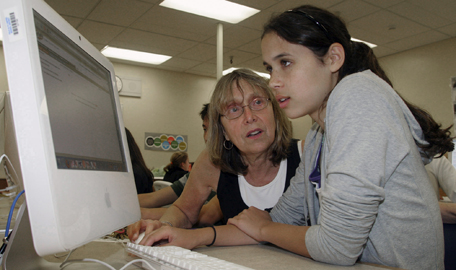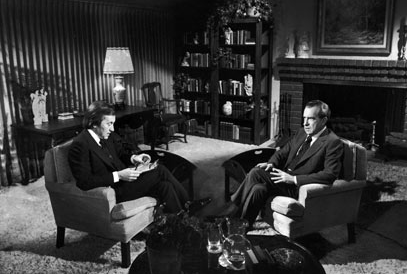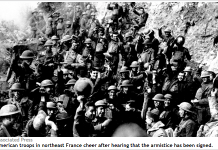Essential Social Studies Sites
1.) The Library of Congress is a great source to find historical documents, photos, art, maps, audio and video, artifacts and other items. The American Memory section organizes items based on topics, time periods and places of American history. The World Digital Library, a cooperative project with UNESCO, includes rare documents from around the world.
2.) The National Archives and Records Administration has a massive collection of material on U.S. history that can sometimes be overwhelming to search through. The Resources for National History Day Research page guides students on where to find material in the archives.
3.) PBS has a wide range of resources for students from its various programs. The most useful is likely the companion Web sites for the American Experience documentary series examining important events and people in American history. Each site includes resources such as descriptions of the events, biographies of key figures, primary source documents, interactive maps and transcripts of the film. Also visit the American Masters series for biographies of historical figures.
3.1) EDSITEment “offers a treasure trove for teachers, students, and parents searching for high-quality material on the Internet in the subject areas of literature and language arts, foreign languages, art and culture, and history and social studies.”
4.) George Mason University’sCenter for History and New Mediahas created a range of Web sitesdesigned for the needs of students and teachers. It includes basic surveys of U.S. and world history, sites that teach students to use primary sources, and sites that provide lesson plans and ideas for teachers. It also features several Web sites of archives and exhibits.
5.) The Smithsonian Institution has a wide variety of exhibitions and collections on American history and culture. It also offers lesson planssearchable by grade level, type of resource and historical topic.
Intro to U.S. Government
6.) iCivics offers civics lessons created by former Supreme Court Justice Sandra Day O’Connor. The page offers resources for middle school students and their teachers, such as printable games and writing assignments.
7.) The Government Printing Office’s Ben’s Guide to U.S. Government for Kids explains in a kid-friendly manner how the U.S. government works; lessons are divided by grade level.
The Constitution
9.) The National Archives’ Charters of Freedom explains the making of and impact of the Declaration of Independence, Constitution and Bill of Rights. It includes images of the documents, biographies of the framers, and fun facts.10.) The University of Chicago’s Founders’ Constitution is an anthology of 18th century writings on the debate over the creation of the Constitution. The works are organized by sections of the Constitution, making it easy to understand how opinion of each founding father influenced the formation of the Constitution.
Presidents
11.) The Web sites of 13 U.S. presidential libraries are linked to by the National Archives. In this libraries, you can find resources such as Franklin Roosevelt’s fireside chats and Richard Nixon’s Watergate tapes.
12.) The University of Virginia’s Miller Center of Public Affairs is the best resource for studying U.S. presidents. It provides detailed biographies of each president, along with profiles of his cabinet, a collection of speeches, and links to the most comprehensive sources for private and public papers.
13.) The official Web site of the White House lets you listen to the President’s weekly video address, read transcripts of White House press briefings, find the names of all current Cabinet members, and more. It also provides biographies of every president.
Congress
15.) The Center on Congress at Indiana University offers interactive simulations that explain how Congress operates. It includes video and audio from congressmen and others.16.) The Library of Congress’ THOMAS is a database of congressional activity dating back to 1973. You can find bills, treaties and the congressional record, and track current activity on the House and Senate floor.17.) The Library of Congress’ A Century of Lawmaking provides the records of the Continental Congress, Constitutional Convention and first 43 sessions of Congress (1789-1873).
18.) The Biographical Directory of the United States Congress offers short biographies of every senator and representative in U.S. history.
The Supreme Court
20.) The Supreme Court Historical Society has a voluminous history of every court, including a timeline of justices with information about each one. There are sections on the current Court and previous “Homes of the Court,” plus quizzes and videos.
Law
21.) The Legal Information Institute of Cornell Law School is the best source for public legal information; it links to government sources for federal, state and international laws, and provides easily searchable text of U.S. codes.
22.) The University of Pittsburgh’s JURIST provide news and commentary of the latest developments in the legal world, as well as providing a wide range of court and government documents.
23.) University of Missouri-Kansas City School of Law professor Douglas Linder has compiled research pages for more than 50 of the most famous trials in history, dating back to the trial of Socrates 399 B.C. Each page includes a detailed account of the events of and leading up to the trial, court documents such as witness testimony and trial excerpts, and other primary documents such as newspaper accounts and letters.
24.) The Google News Archive searches historical newspapers, most of which cannot be found elsewhere in Google. A student studying the rise of Adolph Hitler could review these newspaper results from 1933 to 1937.
25.) Time magazine provides users with access to its impressive article archive dating back to 1923, enabling students to search for articles such as this account of negotiations in 1931 between Winston Churchill and Mahatma Gandhi, who is described in a rather deprecatory manner.
26.) The Times of London organizes its archives through topics such as War & Revolution, Politics & Civil Rights, and Exploration.
27.) The New York Times offers free articles dating from 1851-1922 and 1987-present.
28.) Rag Linen is an online museum and educational archive of rare and historic printed newspapers.
29.) The Sports Illustrated Vaultoffers all the magazine’s articles since its 1954 debut.
30.) The Library of Congress’ Chronicling America displays images of late 19th and early 20th century American newspaper pages.
31.) Cornell University and University of Michigan libraries’ Making of America projects are collections of journals and newspapers from the antebellum, wartime and reconstruction periods.
32.) The Wisconsin Historical Society has scanned every issue of Freedom’s Journal, the first newspaper to be owned and operated by African-Americans.
Online Books
33.) Carnegie Mellon University’s Universal Digital Library holds more than 1 million works from many different fields in a dozen languages.
34.) The British Library lets you browse through scanned books of music, literature, art and other subjects. The library includes Mozart’s sheet music, “Alice’s Adventures Under Ground” by Lewis Carroll, an 18th century Ethiopian bible and many more.
35.) Tufts University’s Perseus Digital Library is the best source for Greek and Latin texts, as well as Germanic texts and Renaissance works.
36.) Project Gutenberg provides more than 30,000 eBooks from the public domain.
37.) Librivox offers text and audio recordings of more than 3,000 public domain books and other works.
Interviews
38.) TED (Technology, Entertainment, Design) is home to inspiring, amusing and cool talks with innovative thinkers and leaders. Learn about emerging technologies, the fashion world, religion, medicine, and much more from the Web site of the TED Prize and annual TED Conference.
39.) The Mike Wallace Interviews was a series of prime-time television interviews conducted between 1957 and 1960. Wallace donated 65 interviews conducted between 1957 and 1958 to the University of Texas, which hosts video and transcripts of the conversations.
40.) Charlie Rose has interviewed hundreds of “America’s best thinkers, writers, politicians, athletes, entertainers, business leaders, scientists and other newsmakers” since his show first aired in 1991.
41.) The Paris Review hosts an archive of interview excerpts with authors dating back to the 1950s.
Speeches
43.) History and Politics Out Loud is a searchable multimedia database documenting and delivering authoritative audio relevant to American history and politics.44.) Historical Voices is a fully searchable online database of spoken word collections spanning the 20th century.
Oral History
45.) Michigan State University’s Vincent Voice Library is home to over 40,000 hours of audio from more than 100,000 “political and cultural leaders and minor players in the human drama,” dating back to 1888.
46.) PBS’ “People’s Century” is a 26-part documentary detailing the events of the 20th century through interviews with average citizens. The Web site includes interview clips and lesson plans.
47.) The Chicago History Museum hosts the work of famed oral historian Studs Terkel from his various radio shows. The site features audio interviews and essays on the importance of oral history.
48.) The Library of Congress’ “Voices from the Days of Slavery: Former Slaves Tell Their Stories” features audio of 20th century interviews of 23 former slaves.
49.) The Veterans of the Civil Rights Movement features testimony of members of Civil Rights organizations such as CORE, NAACP, SCLC and SNCC, who submit stories about their experiences or write commentary on the movement and current events.
50.) Texas Tech University’s Vietnam Archive Oral History Projectfeatures interviews of soldiers and civilians from the U.S. and North and South Vietnam.
51.) “What did you do in the war, Grandma?” and “The Whole World Was Watching: An Oral History of 1968” were projects conducted by South Kingstown (R.I.) High School students who interviewed family members about their experiences during significant times in U.S. history. The projects are great examples of how young students can contribute to the study of history.
52.) The National Archives’ Our Documents created a list of the 100 most important documents in U.S. history. Each entry contains an image of the document, a transcript and an essay explaining the document’s significance.
53.) The National Archives’ Teaching With Documents section presents lessons plans that explain historical events through primary documents.
54.) Milestone Documents offers famous primary source texts with expert analysis and lessons plans, some at no charge, others for a small fee.
55.) EyeWitness to History features first-person accounts of prominent events in U.S. and world history, along with a simple explanation of the event’s importance.
56.) Awesome Stories tells stories from history with links to primary sources.
Historical Documents
57.) Ohio State University’s eHistory has a massive collection of famous documents, letters collections and online books. The highlight of the collection is the Official Records of the Civil War, made up of material from the military departments of the Union and Confederacy.
58.) Yale Law School’s Avalon Project provides a database of documents such as laws, treaties, declarations, constitutions, speeches and statements from ancient history to the 21st century. Documents are organized by time period and by topic.
59.) Oklahoma State University’s Indian Affairs: Laws and Treaties is a seven-volume collection of laws, treaties and executive orders regarding Native Americans between 1778 and 1970.
Letters, Diaries and Biographies
60.) Letters of Note offers a digital copy of an historic handwritten note each day, along with a transcript. It includes this ingenious method of communication during the Revolutionary War.
61.) The University of Virginia’s “The Valley of the Shadow: Two Communities in the American Civil War” chronicles two counties, Augusta County, Va., and Franklin County, Penn., contrasting their experiences from John Brown’s Raid to the end of Reconstruction.
62.) The University of Michigan’s “Spy Letters of the American Revolution” featutres spy letters written by both American and British forces. It includes stories about the letters, maps of the routes they traveled, and biographies of those who sent and received the letters.
63.) Archiving Early America presents a wide array of primary source material on 18th century America, such as newspapers, maps, writings and portraits. It also includes Benjamin Franklin’s autobiography and an 1807 biography of George Washington.
64.) The University of North Carolina’s “North American Slave Narratives” is a collection of slave biographies and autobiographies published as books or pamphlets.
Political Cartoons
65.) HarpWeek examines presidential elections, the Civil War, Reconstruction and other events of 19th century America through the articles and cartoons of Harper’s Weekly.
66.) The U.K. National Archives examines the use of political cartoons throughout world history.
67.) Daryl Cagle’s Teachers’ Guide for the Professional Cartoonists Index offers lesson plans for using modern editorial cartoons in the classroom.
War and Conflict
68.) The U.S. Army Center of Military History provides in-depth accounts of U.S. military operations from a variety of military sources, including “American Military History, Volume 1” and “Volume II.”
69.) The National Security Archive is an independent institute located at The George Washington University that presents documents to the public after they have been declassified by the government.
70.) History Animated provides easy-to-follow animations of key battles in the Revolutionary War, Civil War and Pacific theatre of World War II, with a short description of each battle.
71.) The National Parks Service’s Civil War Soldiers and Sailors System is a database that makes it easy to find personal records Civil War soldiers, sailors, prisoners and regiments.
History Journals
72.) HistoryNet is home to more than 5,000 articles published in Weider History Group magazines, which include American History, Military History, Wild West and World War II.
73.) American Heritage makes many of its articles written since its 1954 debut available online.
74.) BBC History Magazine offers interviews with the authors featured in its monthly issues, many of whom have recently released books. The Web site also includes blogs and short features.
75.) History Now is a quarterly journal put out by the Gilder Lehrman Institute of American History that is designed for history students and teachers. The journal includes lessons plans and its articles include lists of books and online resources on the topic at hand.
76.) History Today is a weekly British magazine published since 1951; its Web site offers virtually all of its articles written since 1980.
77.) George Mason University’s History Matters features 100 Web-based assignments, examples of course syllabi, advice on how to evaluate Web sites and essays on how to utilize primary sources.
78.) SCORE (Schools of California Online Resources for Education) provides both unit and lesson plans for social studies classes, arranged by topic and grade level.
79.) Teaching History with Technology offers a wealth of resources for incorporating the Internet into the history curriculum, including these innovative projects.
Geography
81.) The University of Oregon’s Mapping History provides interactive maps explaining events in American, European, Latin American and African history.82.) The CIA World Factbook gives an overview of every country in the world, with maps, flags and facts on physical and political geography.83.) TravelPod has a fast-paced geography game that quizzes students on world capitals, location of popular cities, world flags and more.
Migration
85.) Simon Fraser University Museum of Archaeology and Ethnology’s “A Journey to a New Land” tells the story of the first people to arrive in the Americas.86.) National Geographic’s Atlas of the Human Journey examines early human’s migration from Africa to all parts of the globe.
Current Events
87.) The Morningside Center’s Teachable Moment offers lesson plans on current events for K-12.
88.) The Newseum provides a look at today’s front page of 827 newspapers in 77 countries, giving students the chance to see how differently news is covered from city to city and country to country.
89.) PBS Frontline’s Teacher Center is a collection of lesson plans and activities to accompany Frontline documentaries in the classroom
90.) The Guardian’s Interactive Guides give interactive overviews of significant issues occurring in the world today.
Photographs
91.) The Library of Congress’s Prints & Photographs Online Cataloghas dozens of collections of photographs, illustrations, posters and other images. Highlights of the catalog include Ansel Adams’s photos of Japanese-American internees and Matthew Brady’s Civil War photographs.
92.) Google’s Life photo archive is home to photos that were featured in Life magazine and many owned by the magazine that were never published.
93.) Dartmouth professor Hany Farid examines photographs through history that have been doctored, usually for propaganda or to conform to societal norms.
Economics
94.) Practical Money Skills offers financial education for kids, adults and teachers. Developed by Visa in partnership with consumer advocates, educators and financial institutions, the site contains articles, advice, financial planning tools and links to financial education material.
95.) Fed101 is an interactive Web site of the Federal Reserve that’s full of information about how the government guides the economy. There are several lessons, activities, games and quizzes for student enrichment and general knowledge. Click on Teacher Resources for an excellent economics search engine.
96.) Council for Economic Education offers 20 American standards for teaching economics, with links to lesson plans and benchmarks for each one.
97.) PBS’ Social Studies section contains more than 180 resources on economics aimed at high school students, including lesson plans, videos, online activities and more.
98.) The Economics Search Engine is a custom search engine that only searches 23,000 Web sites recommended by associations of economists.
Psychology
99.) Teaching High School Psychology is a blog moderated by five high school psychology teachers. Aside from the daily blog posts, it links to a great wealth of resources, including outstanding school Web sites, “must read” books, and other links.
100.) Teaching Social Psychology is an up-to-date collection assembled by a college professor of activities and exercises for teaching social psychology.
101.) The American Psychological Association offers a whole page of high school teacher resources, including links to lesson plans, “pacing calendars” and local speakers’ bureaus.











